You may have heard the term almond skin tone, or maybe someone told you that you have almond-colored skin. Almond skin tone sounds beautiful, but what exactly is it?
In this article, I will help you determine if you have an almond skin tone, give you tips on how you can maintain your almond complexion, and a whole lot more.
What is almond skin tone? An almond skin tone is a lovely light shade of tan with hints of blue, pink, or red undertones. This light brown skin tone is common among Africans, Hispanics, and Asians.
Almond skin is classified as type IV on the Fitzpatrick Pigmentary Skin Chart (see image below). This skin type ranges from light to dark brown and often has olive or golden undertones. Type IV skin types, such as almond skin, rarely burn and tans often.
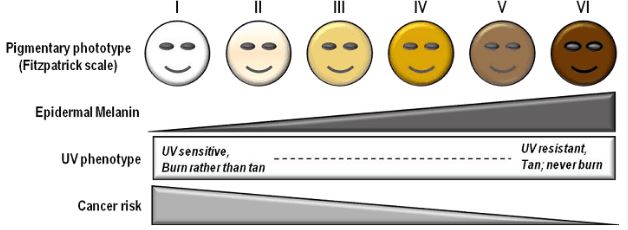
If you know the type of skin tone you have, you will then know what the best color clothing, makeup, and foundation to wear.
Read on to learn more about almond skin tone, including celebrities who have this skin tone and tips for caring for your almond skin.
Also, for an excellent product for anyone with almond skin tone, take a look at our top pick, the ELEMIS Pro-Collagen Marine Cream:
Click here to see it on Amazon.
What Is Almond Skin Tone?
If you have an almond skin tone, the best way to describe it is that you have a lovely shade of tan with blue, pink, or red undertones. Some may describe the almond complexion as sandy yellow with a light skin tone.
Those who have this type of skin tone are usually Asians, Hispanics, and Mediterranean people.
Almond skin tone is classified as a type IV skin tone according to the Fitzpatrick pigmentary scale. If you have this skin tone, you have the following characteristics:
- Medium brown skin
- Your skin rarely burns but tans very easily
- Dark hair
- Dark eyes (hazel to ebony)
- Unexposed skin is light brown
- High risk of hyperpigmentation
- High risk of scarring
- Moderate risk of vascular damage
What sets apart almond skin from olive skin tone is that the former can either have pink, red, or blue undertones (cool undertones) compared to the latter, which are defined by green, golden, or yellow undertones (warm undertones).
Celebrities with Almond Skin Tone
See the four celebrities with almond skin tone that I list below. This will help you determine exactly what it looks like. You may also notice that these celebrities have almond skin with lovely shades of tan with blue, pink, or red undertones.
1. America Ferrera

ID 175998200 © Featureflash | Dreamstime.com
America Ferrera is an American actress, voice actress, producer, and director. She has Honduran parents and was born in California. America has glowing almond skin with cool undertones.
2. Mindy Kaling

ID 173175908 © Featureflash | Dreamstime.com
Vera Mindy Chokalingam, also known as Mindy Kaling, is an American comedian, actress, producer, director, and writer, known for her portrayal of the character Kelly Kapoor in the NBC sitcom, The Office. Mindy has a beautiful almond skin tone with warm undertones.
3. Vanessa Hudgens

ID 176194481 © Featureflash | Dreamstime.com
Vanessa Anne Hudgens is an American singer and actress famous for her portrayal of the character Gabriella Montez in the High School Musical TV film series in 2006–2008.
4. Priyanka Chopra Jonas

ID 131173472 © Dddube | Dreamstime.com
Priyanka Chopra Jonas is an Indian actress, singer, and film producer. She is famous for winning the Miss World 2000 pageant. Her light almond skin tone is radiant with cool undertones.
How Do You Know If Your Almond Skin Has Cool Undertones?
Here’s a quick checklist to see if you have light brown or almond skin with cool undertones:
- Bluish veins on your wrist
- Silver, platinum, or white gold jewelry looks better on you than yellow gold ones
So you’ve finally figured out that you have an almond skin tone or almond skin color with cool undertones. From here on, decisions about what shades of makeup, hair color, and clothing colors to wear will be quite easier. To help you choose the right color for your almond skin tone, follow these tips:
- Since you have cool undertones, warm shades can work wonders on your overall look. These shades include amber, caramel with blonde highlights, golden brown, honey, or warm red.

- When in doubt, just remember the color wheel. Half of the color wheel has warm colors, and the other half has cool shades. So, you can choose cool tones for your jewelry, and then select warm shades for your bottom, shoes, or bag.
If you are still uncertain about whether you have a cool skin tone or not, watch this video.
Types of Hyperpigmentation
People with type IV-VI skin types on the Fitzpatrick pigmentary scale, which includes almond skin tone, are more prone to hyperpigmentation. The sudden appearance of darker pigmented skin compared to other parts of your skin is a sure sign that you have hyperpigmentation.
Here are the types of hyperpigmentation:
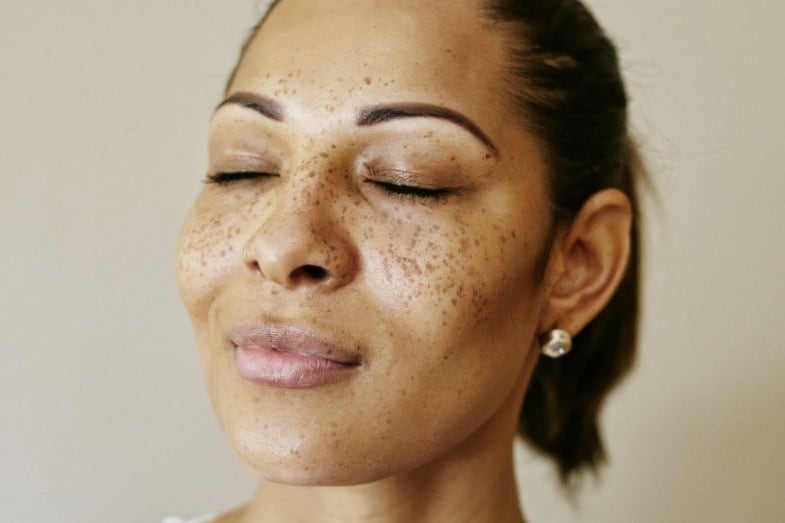
1. Sunspots or Solar Lentigines
Sunspots (also known as solar lentigines), as the name implies, are caused by too much exposure to the sun. Thus, the areas usually affected by sunspots include your face, neck, chest, hands, and other parts of your body exposed to the sun.
As you age, sunspots can affect your skin more often, especially those with almond skin color. To treat the spots, some people use brightening agents, chemical peels, and even fractional laser resurfacing.
2. Melasma
The second type of hyperpigmentation seen among people with almond skin tone is melasma, also known as chloasma. This type of hyperpigmentation is said to be “the mask of pregnancy.”
Melasma can show patches of light to medium brown skin in areas often exposed to the sun. In some cases, women do not need to treat this type of hyperpigmentation because it eventually goes away after giving birth. However, some use retinol and hydroquinone to treat it quickly.
3. Freckles
People who have type I, II, and III skin on the Fitzpatrick scale experience this type of hyperpigmentation. Freckles may occur naturally on their skin or be triggered by too much exposure to the sun, specifically UVB rays. You can use kojic acid to treat this hyperpigmentation.
Freckles aren’t as common on those with type IV, which is almond-colored skin, but lighter almond color skin can have freckles as a form of hyperpigmentation.
4. Post-Inflammatory Hyperpigmentation (PIH)
Those who have type IV-VI skin tones of the Fitzpatrick scale are more susceptible to this skin discoloration. The causes of PIH include trauma of tissues from burns, acne, injury, psoriasis, and other skin disorders or conditions.
As a result, darkened and irregular patches appear on the affected area. To treat this type of hyperpigmentation, you can use chemical peels, skin lighteners, and exfoliators.
While this skin discoloration is challenging to treat, knowing what causes it is the first step to making sure that your almond skin won’t suffer further damage from hyperpigmentation.
Causes of Hyperpigmentation
1. Hereditary
Some skin types, such as type IV-VI skin tones on the Fitzpatrick pigmentary scale, are susceptible to hyperpigmentation. Types IV, V, and VI are skin types with relatively higher melanin content in contrast to the first three skin types.
The scale itself is based on the reaction of people’s skin upon exposure to the sun, so race and skin color are sometimes factors in determining whether you are vulnerable to hyperpigmentation.
So, in general, Mediterranean people and those of African, Asian, and Hispanic origin are more prone to hyperpigmentation.
2. Aging
Aside from genetics, the natural process of aging can increase your risk of hyperpigmentation. How? Aging can affect your body’s natural production of melanin; thus, causing irregularities in melanin formation.
3. Sun Exposure
Too much exposure to the sun will cause your body to produce more melanin as a response. Specifically, UVA radiation causes your skin to age and deteriorate. Some signs of photoaging include patchy and mottled pigmentation, wrinkles, sagging, and even dryness.
4. Changes in Hormones
Changes in hormones can also trigger hyperpigmentation. Usually, this case is prominent in pregnant women, in which they experience chloasma, dark underarms, and darker skin on the neck and joints.
5. Skin Trauma
As the name implies, this condition arises after a wound or acne scarring. This specific hyperpigmentation is called post-inflammatory hyperpigmentation (PIH). In some cases, hyperpigmentation eases after a few months.
6. Medications
Certain types of medications, such as chemotherapy drugs and birth control pills, also cause hyperpigmentation.
7. Medical Conditions
Certain medical conditions, such as hemochromatosis and Addison’s disease, can cause hyperpigmentation. You should see your doctor if you have hyperpigmentation in the following areas:
- Lips
- Elbows and knees
- Knuckles
- Toes
- Inside of cheeks
How to Prevent Hyperpigmentation
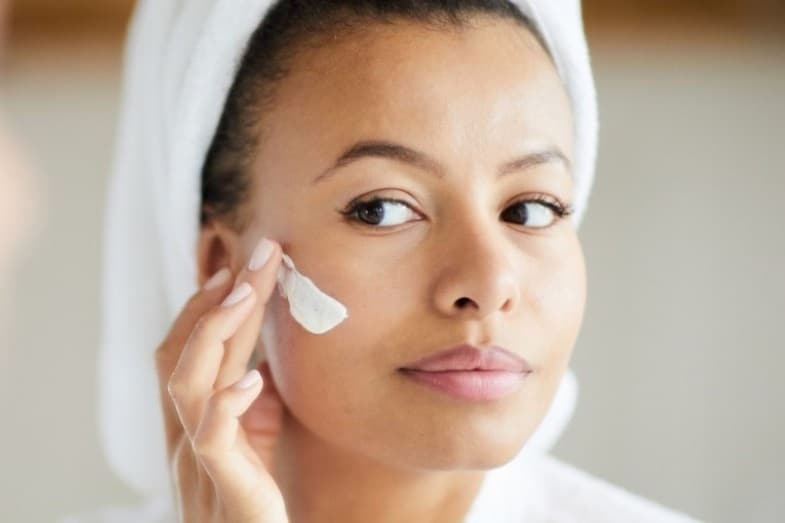
To prevent your almond skin color from developing hyperpigmentation, follow these tips:
1. Use a Broad-spectrum Sunscreen
Apply sunscreen even when you are indoors. Also, even though almond skin color rarely burns, it is wise to avoid too much exposure to the sun. If sun exposure is inevitable, you should wear appropriate clothing when outdoors.
2. Treat Your Skin Infection and Acne
Scarring from inflamed skin and acne can be prevented by treating your skin carefully and correctly.
3. Use Skincare Products Suitable for Your Skin
The most crucial factor that you should consider when choosing skincare products is your skin type and not because of a popular product or brand.
4. Treat Your Skin Gently
Do not rub, pick, or scrub your skin to prevent unnecessary scarring.
5. Discover the Benefits of Serum
A serum is a highly concentrated formula composed of molecules smaller than any skincare product. Thus, it can deliver active ingredients directly to your skin.
Click here to see it on Amazon.
CeraVe Hyaluronic Acid Serum for Face is a hydrating serum formulated with the highest concentration of hyaluronic acid to help retain the skin’s natural moisture, resulting in a more hydrated and smoother appearance.
The lightweight serum has a smooth, gel texture, making it easy to apply.
For optimal results, it is recommended to apply the serum in a thin layer to slightly damp skin and allow it to fully absorb before applying additional products like eye cream or facial moisturizer.
Enriched with Vitamin B5 to soothe the skin, the serum features CeraVe’s patented MVE ingredient-delivery technology, ensuring the continual release of moisturizing ingredients for 24-hour lasting hydration.
The inclusion of three essential ceramides (1, 3, 6-II) in the formula helps restore and maintain the skin’s natural barrier. Developed with dermatologists, CeraVe Skincare offers products suitable for various skin types, including dry, sensitive, oily, and acne-prone skin.
To apply, simply massage your face and neck with this serum every morning and night after applying your face cream. Massage the areas continuously until the serum is fully absorbed.
The benefits of this serum for your almond skin are as follows:
- Hydrates your skin
- Protects your skin from possible damage caused by free radicals
- Revitalizes your skin
6. Use a Repair Balm for Your Damaged Skin
Say goodbye to your scars and burns by using the Erno Laszlo Phormula 3-9 Repair Balm. This repair balm is a nourishing balm inspired by a product that catered to the needs of Marilyn Monroe.
Click here to see it on Amazon.
With this product’s mixture of botanical oils, such as dromiceius, tamanu oils, and marine extracts, you won’t have to worry about your scars and burns. This blend helps soothe and moisturize your dry, irritated, damaged, and traumatized skin.
This product can also reduce your skin’s redness and puffiness. The marine extracts, specifically glycosaminoglycans, keep your skin hydrated by attracting water towards your skin. The two oils included in this product’s formula can also effectively soothe your skin.
7. Use an Anti-wrinkle Skincare Product
The ELEMIS Pro-Collagen Marine Cream is a clinically proven anti-wrinkle day cream. This cream can give you satisfying results in just 14 days. Aside from reducing your wrinkles, this cream enhances your skin’s firmness and tones your skin.
Click here to see it on Amazon.
Thanks to the following ingredients:
- Padina pavonica
- Ginkgo biloba
- Rose and Mimosa absolutes
The benefits of the Elemis Marine Cream for your skin are as follows:
- Reduces wrinkles, dullness, and lack of tone
- Lightweight
- Hydrates your skin
To apply, gently massage a pea size of this cream to your face, neck, and décolleté. Add a little bit more if your skin is dry.
How to Treat Hyperpigmentation
One of the causes of hyperpigmentation is exposure to the sun. Thus, it is quite challenging to prevent. In case you get darkened spots on your skin, you can do the following:
1. Use Topical Creams
Topical creams with the following ingredients can help treat hyperpigmentation:
- Vitamin C
- Hydroquinone
- Kojic acid
- Tretinoin
- Corticosteroids
- Azelaic acid
2. Have a Cosmetic Procedure
Here are some procedures you can ask your doctor to treat your hyperpigmentation:
- Laser therapy
- Intense pulsed light
- Chemical peels
- Microdermabrasion
Of course, before you get a procedure, you should ask about the side effects or if the method is necessary for the type of hyperpigmentation you have.
3. Use Creams Containing Glabridin or Green Tea
Glabridin found in licorice extracts is said to have anti-inflammatory, antioxidant, and skin-brightening effects.
Similar to licorice, green tea also contains antioxidant and anti-inflammatory properties. Some people even use green tea in treating melasma and sunburns.
Conclusion – What Is Almond Skin Tone?
So to recap, what is almond skin tone, and what does it look like? Almond skin tone is a medium brown skin with pink, red, or blue undertones. Two well-known celebrities with almond skin tone are Vanessa Hudgens and Priyanka Chopra Jonas.
Almond skin tone is more prone to hyperpigmentation. It is under the 4th type of skin on the Fitzpatrick scale, so you have to treat your acne, wounds, and burns carefully to avoid hyperpigmentation.
Related reading:
What Is Copper Skin Tone? (With Pictures)
What Is Italian Skin Tone? (With Pictures)
Olive-Toned Skin: What Goes Well with Olive Skin Tone?







![Golden Brown Skin Tone - What Is It? [With Pictures] golden brown skin](https://skincaregeeks.com/wp-content/uploads/2021/04/golden-brown-skin-150x150.jpg)

![Neutral Skin Tone Defined [and Best Colors for Neutral Skin] neutral skin tone](https://skincaregeeks.com/wp-content/uploads/2021/05/neutral-skin-tone-150x150.png)

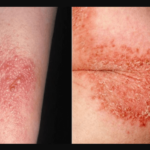
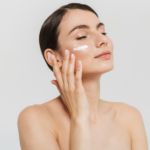
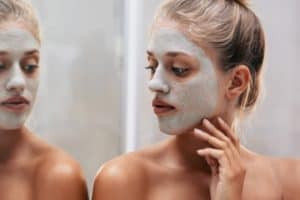
![Read more about the article Shades of Brown Skin [20 Common Brown Shades with Chart]](https://skincaregeeks.com/wp-content/uploads/2021/05/shades-of-brown-skin-tone-300x200.jpg)
